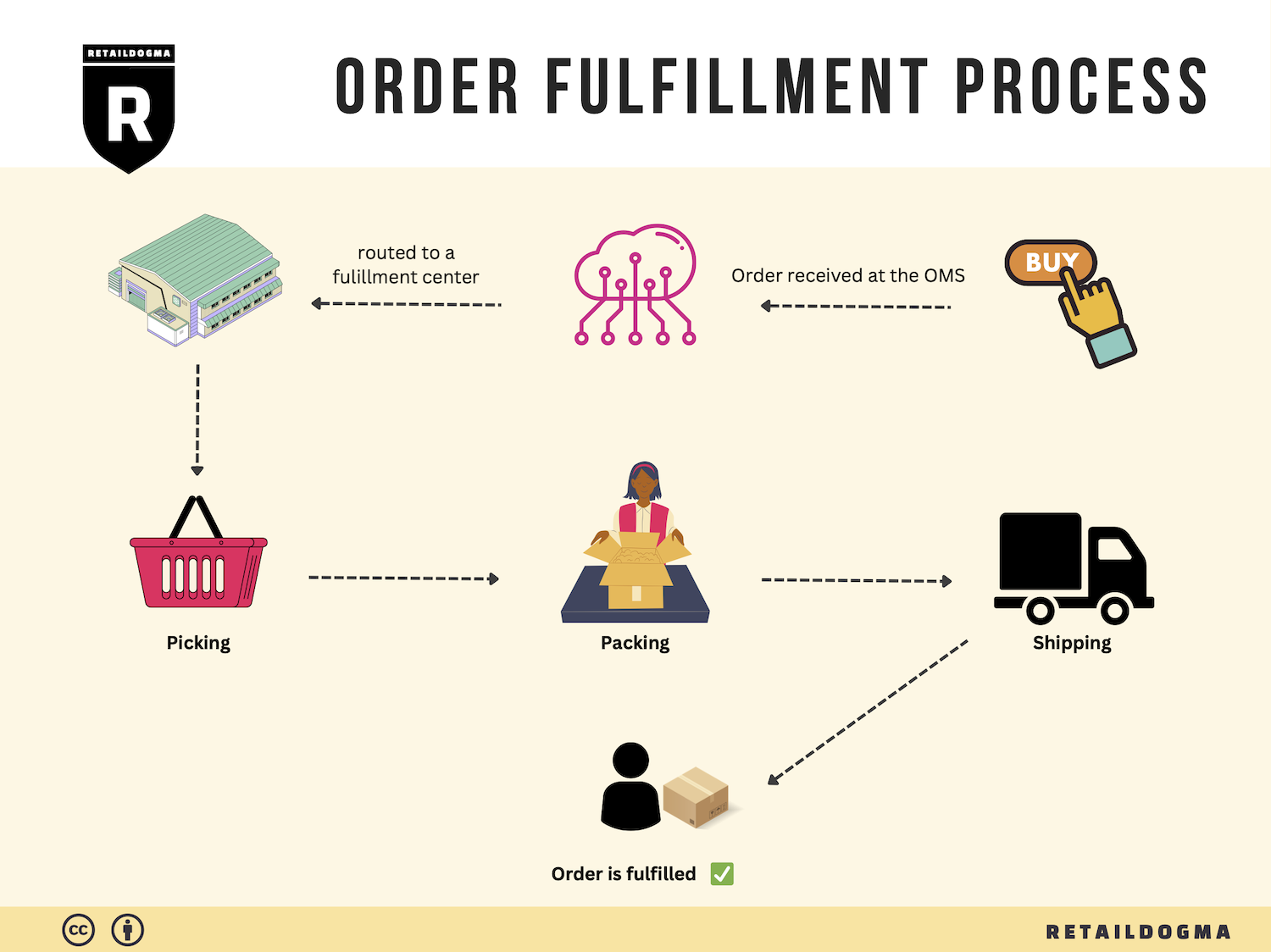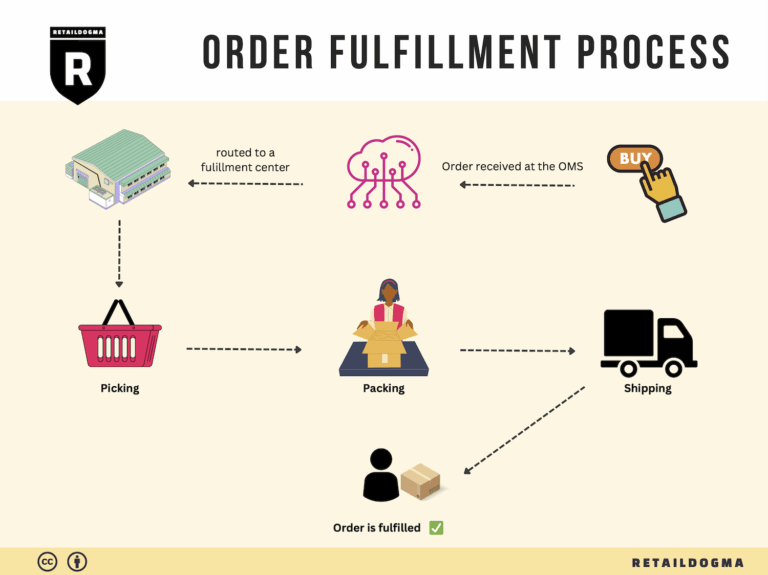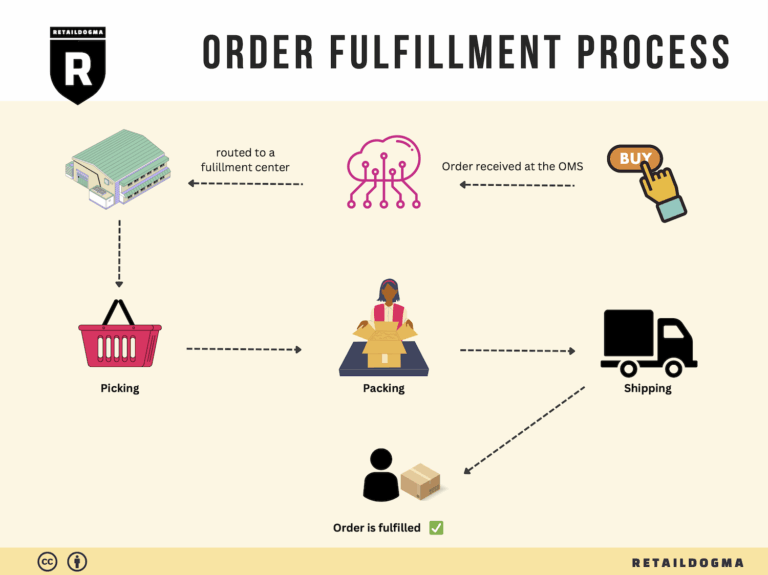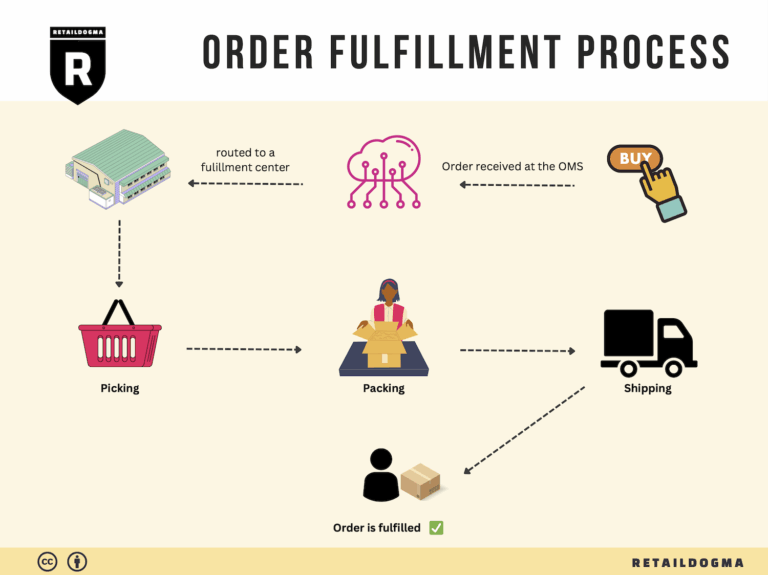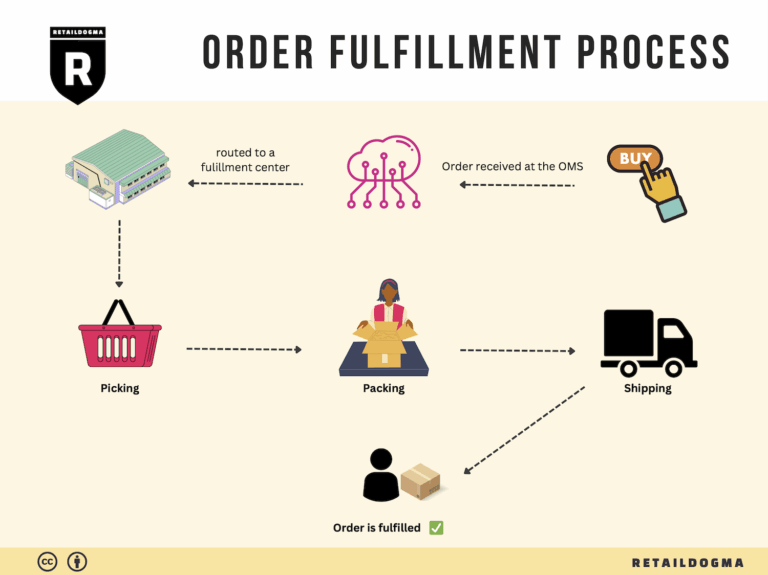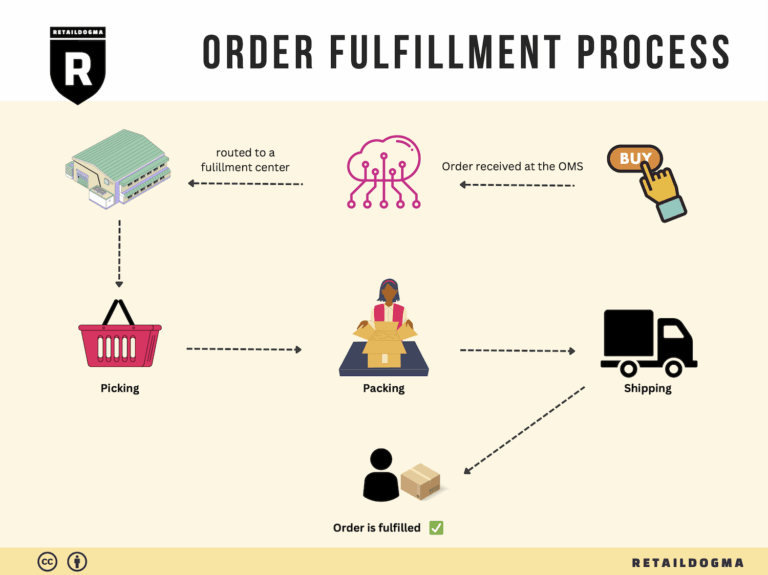Ecommerce Fulfillment Services: The Ultimate Guide (2025)
What is E-commerce Fulfillment? An Introduction for Growing Businesses
Understanding E-commerce Fulfillment
As an e-commerce business owner, the thrill of growing your sales can quickly turn into the headache of managing logistics. Packing, shipping, and handling customer inquiries can become overwhelming, especially as your order volume increases. This is where e-commerce fulfillment comes into play—a crucial process that ensures your products reach customers efficiently and reliably. Simply put, fulfillment is the entire operation of getting a product from your inventory to the hands of your customer.
In this guide, we will explore the various fulfillment models available to e-commerce businesses, including Fulfillment by Amazon (FBA), Fulfillment by Merchant (FBM), and the use of third-party logistics (3PL) providers. Each model has its unique advantages and challenges, and understanding these differences is essential for making informed decisions about your logistics strategy.
We will delve into the core services that fulfillment partners typically offer, such as inventory storage, order processing, shipping coordination, and customer service management. These services can significantly impact your operational efficiency and customer satisfaction, making it vital to choose a partner that aligns with your business goals.
Choosing the right fulfillment partner is not just about cost; it involves assessing their capabilities, reliability, and how well they can integrate with your existing systems. We will provide practical tips on evaluating potential partners, including what questions to ask and what metrics to consider.
Pricing is another critical aspect that we will cover. Understanding the various costs associated with fulfillment—ranging from storage fees to shipping rates—can help you budget effectively and maintain healthy profit margins.

The goal of this guide is to empower you to make smart, strategic decisions about your e-commerce fulfillment operations. By the end, you will have a clearer understanding of the fulfillment landscape, enabling you to select the model and partner that best fits your business needs. Whether you’re looking to streamline your logistics, improve customer satisfaction, or scale your operations, this guide will serve as a comprehensive resource to support your growth journey.
What You’ll Learn In This Guide
- What is E-commerce Fulfillment? An Introduction for Growing Businesses
- The Order Fulfillment Process: From ‘Buy’ Button to Customer’s Door
- Comparing Fulfillment Models: In-House vs. 3PL vs. Dropshipping
- A Deep Dive into Amazon FBA: Pros, Cons, and Who It’s For
- Core Services Offered by Fulfillment Centers
- How to Choose a Fulfillment Partner: A 6-Point Checklist
- Understanding Fulfillment Pricing: A Breakdown of Common Fees
- Frequently Asked Questions (FAQs) about Fulfillment
- Conclusion: Is Outsourcing Fulfillment the Right Move for Your Business?
- Important Disclaimer
The Order Fulfillment Process: From ‘Buy’ Button to Customer’s Door
1. Receiving Inventory
The order fulfillment process begins with receiving inventory, a critical step that sets the stage for efficient order processing. When products arrive at the fulfillment center, they undergo a thorough inspection to ensure they meet quality standards and match the purchase order. This is where the use of SKU (Stock Keeping Unit) numbers comes into play, which helps identify and categorize products systematically.
Why is this step important? Proper receiving practices reduce errors and prevent stock discrepancies. An effective receiving process ensures that all products are accounted for and are in good condition, which minimizes returns and enhances customer satisfaction. Additionally, accurate data entry during this phase is crucial for maintaining up-to-date inventory levels, which directly impacts order fulfillment speed and accuracy.
2. Warehouse Storage
After inventory is received and verified, the next step is warehouse storage. Products are organized and stored in designated areas within the fulfillment center based on their SKU numbers, size, and demand. This organization can utilize various storage methods, such as pallet racking or shelving, to maximize space efficiency and facilitate easy access.
The importance of effective warehouse storage cannot be overstated. A well-organized warehouse enables faster order picking and minimizes the time spent searching for items. Moreover, strategic placement of high-demand items near packing stations can significantly improve order fulfillment speed. Businesses should also consider employing warehouse management systems (WMS) that assist in tracking inventory locations and managing stock levels in real time.
3. Order Picking
Once an order is placed by a customer, the next step is order picking, where items are retrieved from storage to fulfill the order. This process is often guided by pick lists, which detail the items and quantities needed for each order. Depending on the fulfillment strategy, picking can be done in several ways: single order picking, batch picking, or zone picking.
Order picking is a pivotal phase in the fulfillment process because it directly affects delivery speed and accuracy. Efficient picking reduces the risk of errors, such as sending the wrong items, which can lead to customer dissatisfaction and increased return rates. Implementing technologies such as barcode scanners or RFID (Radio Frequency Identification) can enhance accuracy and speed during this step, allowing for real-time inventory updates as items are picked.
4. Order Packing
Once items are picked, they move to the packing station, where they are carefully packed for shipment. During this stage, the use of packing slips ensures that the correct items are included in each package. The packaging process also involves selecting appropriate materials to protect products during transit, which may include bubble wrap, packing peanuts, or custom boxes.
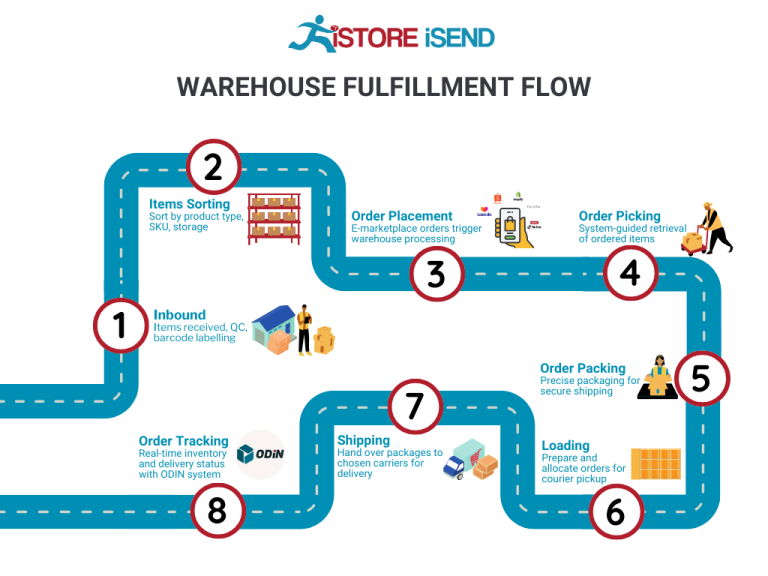
The significance of proper order packing lies in its impact on customer experience and shipping costs. Well-packed items reduce the likelihood of damage during shipping, leading to fewer returns and higher customer satisfaction. Additionally, optimizing package size and weight can help businesses save on shipping fees. Automated packing systems can also streamline this process, improving efficiency and consistency.
5. Shipping & Delivery
The final step in the order fulfillment process is shipping and delivery, where packages are handed over to carriers for transport to the customer’s address. This phase involves selecting the most cost-effective and timely shipping options, which can vary based on destination and delivery speed preferences. Businesses often use shipping software to compare rates and track shipments.
This step is crucial because timely delivery is a significant factor in customer satisfaction and retention. Customers expect their orders to arrive on time, and delays can result in negative reviews and lost future sales. Additionally, providing customers with tracking information enhances transparency and improves the overall shopping experience. Implementing strategies such as utilizing multiple carriers or offering expedited shipping options can further enhance delivery efficiency.
In conclusion, understanding and optimizing each step of the order fulfillment process—from receiving inventory to shipping and delivery—can significantly enhance operational efficiency and customer satisfaction for e-commerce businesses. By focusing on key practices and leveraging technology, businesses can scale their logistics effectively, ensuring they meet customer demands in a competitive market.
Comparing Fulfillment Models: In-House vs. 3PL vs. Dropshipping
Fulfillment Model Comparison
| Model | Who Handles Inventory | Best For (Business Stage) | Key Advantage | Key Disadvantage |
|---|---|---|---|---|
| In-House Fulfillment | Business owner or internal team | Established businesses | Full control over inventory and branding | High overhead costs and resource-intensive |
| Third-Party Logistics (3PL) | Third-party logistics provider | Growing to mid-sized businesses | Scalability and reduced operational burden | Less control over fulfillment processes |
| Dropshipping | Supplier or manufacturer | Startups and small businesses | Low upfront investment and minimal risk | Lower profit margins and dependency on suppliers |
In-House Fulfillment
In-house fulfillment involves managing all aspects of storage, packing, and shipping within the business itself. This model is most suitable for established businesses that have the resources to invest in their own warehousing and logistics. One of the key advantages of in-house fulfillment is the complete control it offers over inventory management and branding. Businesses can customize packaging, handle quality control, and ensure that customer experiences are aligned with their brand values. However, this model comes with significant challenges, particularly regarding costs. Setting up and maintaining a warehouse, hiring staff, and managing logistics can be resource-intensive, leading to high overhead costs. Additionally, as order volumes increase, scaling operations can become complicated and costly, requiring careful planning and investment in technology and infrastructure.
Third-Party Logistics (3PL)
Third-party logistics (3PL) providers offer businesses a way to outsource their fulfillment needs to specialized companies. This model is ideal for growing to mid-sized businesses looking to scale operations without the burden of managing logistics in-house. By partnering with a 3PL, businesses can benefit from the provider’s expertise in inventory management, shipping, and customer service. The key advantage of using a 3PL is scalability; businesses can easily adjust their logistics operations based on demand without needing to invest in additional infrastructure. However, the reliance on a third party means that businesses have less control over the fulfillment process. This can lead to challenges in maintaining quality standards and ensuring that customer expectations are met. It’s crucial for businesses to choose a reputable 3PL that aligns with their operational needs and values.
Dropshipping
Dropshipping is a fulfillment model where the retailer does not hold inventory but instead relies on suppliers or manufacturers to ship products directly to customers. This model is particularly well-suited for startups and small businesses that may not have the resources to invest in inventory upfront. The primary advantage of dropshipping is the low barrier to entry; businesses can start selling products without the financial risk associated with purchasing and storing inventory. However, dropshipping also comes with significant disadvantages. Profit margins can be lower compared to other models, as retailers often have to pay higher per-unit costs to suppliers. Additionally, businesses are highly dependent on their suppliers for order fulfillment, which can lead to issues with stock availability, shipping times, and quality control. This reliance can impact customer satisfaction and brand reputation, making it essential for businesses to establish strong relationships with reliable suppliers.
In summary, each fulfillment model presents unique advantages and challenges that e-commerce businesses must carefully consider based on their specific needs, growth stage, and operational capabilities. By understanding these models, business owners can make informed decisions that will support their growth and enhance their customer experience.
A Deep Dive into Amazon FBA: Pros, Cons, and Who It’s For
Understanding Fulfillment by Amazon (FBA)
Fulfillment by Amazon (FBA) is a service provided by Amazon that allows sellers to store their products in Amazon’s fulfillment centers. Amazon takes care of the storage, packaging, shipping, and customer service for these products. This model enables sellers to leverage Amazon’s extensive logistics network, allowing for efficient scaling of their e-commerce businesses.
How FBA Works
-
Inventory Preparation: Sellers prepare their products according to Amazon’s specific guidelines, including proper labeling and packaging.
-
Shipping to Amazon: Once prepared, sellers ship their inventory to designated Amazon fulfillment centers. Amazon receives and scans these products, making them available for sale on the platform.
-
Order Processing: When a customer places an order, Amazon’s sophisticated system automatically picks, packs, and ships the product from its fulfillment center.
-
Customer Service: Amazon handles all customer service inquiries, returns, and refunds, ensuring a seamless shopping experience for customers.
-
Multi-Channel Fulfillment: Sellers can also fulfill orders from other platforms (like eBay or Shopify) using Amazon’s logistics, further expanding their reach.

Pros of FBA
-
Prime Eligibility: Products stored in Amazon’s fulfillment centers automatically qualify for Amazon Prime. This status increases visibility and can lead to higher conversion rates, as Prime members tend to prefer items with the Prime badge due to fast and reliable shipping.
-
Customer Trust: Leveraging Amazon’s brand reputation can enhance buyer confidence. Customers are more likely to purchase from sellers using FBA, knowing they will receive prompt shipping and professional customer service.
-
Multi-Channel Fulfillment: FBA allows sellers to manage fulfillment for orders not just from Amazon, but from other sales channels as well. This flexibility is invaluable for businesses that operate across multiple platforms.
-
Scalability: Sellers can grow their business without needing to invest heavily in their own warehousing and logistics infrastructure. FBA allows for easier scaling as demand increases.
-
Reduced Operational Burden: By outsourcing fulfillment to Amazon, sellers can focus more on other aspects of their business, such as marketing and product development, rather than logistics and order processing.
Cons of FBA
-
High Fees: One of the most significant drawbacks of FBA is the cost. Sellers must pay various fees, including fulfillment fees (for picking, packing, and shipping) and storage fees. These costs can add up, especially during peak seasons when storage fees increase.
-
Strict Inventory Rules: Amazon has stringent requirements for how products must be prepared, packaged, and labeled before they are sent to their fulfillment centers. Non-compliance can lead to additional fees or rejected shipments.
-
Commingling Risks: FBA uses a commingling inventory model, meaning that the inventory from various sellers may be stored together. This can pose a risk for sellers, particularly if issues arise with product quality or if a customer receives a different product than what was ordered.
-
Less Control Over Branding: When using FBA, sellers have limited control over packaging and branding, as Amazon dictates how products are packed and shipped. This can hinder a seller’s ability to create a distinctive brand experience.
-
Potential for Long-Term Storage Fees: If inventory remains unsold for an extended period, sellers may incur long-term storage fees, which can eat into profit margins.
Who is FBA Best For?
Fulfillment by Amazon is particularly suited for:
-
Small to Medium-Sized Businesses: E-commerce businesses looking to scale without the need for substantial investment in logistics infrastructure can benefit greatly from FBA. It allows them to focus on growth while Amazon manages the complexities of fulfillment.
-
Sellers with High Sales Volume: Businesses that experience high sales volume or seasonal spikes can leverage FBA to ensure they meet customer demand without the risk of stockouts.
-
Brands Seeking Trust and Visibility: Sellers looking to enhance their brand’s visibility and reputation should consider FBA. The Prime badge and Amazon’s customer service can significantly improve conversion rates.
-
Multi-Channel Retailers: Brands that sell across multiple platforms and require a reliable fulfillment partner can use FBA to streamline their logistics, allowing them to focus on their core business activities.
In conclusion, while Fulfillment by Amazon offers numerous advantages, such as increased visibility and reduced operational burden, potential sellers must carefully weigh these benefits against the associated costs and restrictions. Understanding the nuances of FBA is crucial for e-commerce businesses aiming to leverage Amazon’s powerful fulfillment network effectively.
Core Services Offered by Fulfillment Centers
Inventory Management & Warehousing
Fulfillment centers offer robust inventory management and warehousing solutions that are crucial for e-commerce businesses. This service encompasses the storage, organization, and tracking of products, ensuring that sellers maintain optimal stock levels without the need for large, costly warehouses of their own.
What It Is
Inventory management involves systematic control over stock levels, including monitoring incoming and outgoing products. Fulfillment centers utilize advanced inventory management systems that provide real-time data on stock levels, product availability, and order fulfillment status. These systems often integrate with e-commerce platforms to streamline operations.
Benefits to E-Commerce Businesses
-
Cost Efficiency: By utilizing a fulfillment center’s warehousing capabilities, businesses can significantly reduce overhead costs related to maintaining their own storage facilities. This allows for better allocation of capital towards growth initiatives.
-
Scalability: As sales increase, the ability to quickly adjust inventory levels without the need for additional physical space allows businesses to scale efficiently. Fulfillment centers can accommodate fluctuating demand, particularly during peak seasons.
-
Reduced Risk of Stockouts: With effective inventory management, e-commerce businesses can avoid stockouts that lead to lost sales and dissatisfied customers. Real-time tracking enables proactive restocking and demand forecasting.
Pick and Pack Services
Pick and pack services are at the heart of fulfillment center operations, responsible for preparing customer orders for shipment. This process involves selecting items from inventory (picking) and packaging them for delivery (packing).
What It Is
Once an order is placed, fulfillment center staff pick the ordered items from the warehouse shelves, pack them securely, and prepare them for shipment. This process is often automated to enhance efficiency, but skilled staff are also involved to ensure accuracy and quality.
Benefits to E-Commerce Businesses
-
Speed and Accuracy: Fulfillment centers employ trained personnel and sophisticated technologies to ensure quick and accurate order processing. This speed is crucial for maintaining customer satisfaction and loyalty.
-
Customized Packaging: Many fulfillment centers offer options for customized packaging, allowing businesses to enhance their brand visibility and customer experience through personalized packaging materials and inserts.
-
Reduced Labor Costs: By outsourcing pick and pack operations, e-commerce businesses can save on labor costs associated with hiring, training, and managing in-house staff. This allows for a focus on core business activities such as marketing and product development.
Kitting and Assembly
Kitting and assembly services are essential for businesses that sell products requiring assembly or packaging together as a single unit. This service involves combining multiple items into a ready-to-sell kit or preparing products for sale that require assembly.
What It Is
Kitting involves grouping various individual items into a single package or kit, which can be sold as a single product. Assembly may include putting together products before shipping them out, such as electronics requiring assembly or furniture that needs to be packaged with all necessary parts.
Benefits to E-Commerce Businesses
-
Enhanced Product Offering: Kitting allows businesses to create unique product offerings that can attract customers looking for convenience. Bundled products often have higher perceived value and can lead to increased sales.
-
Simplified Shipping: By assembling products before shipment, businesses can reduce complexity in the shipping process, ensuring that customers receive all necessary components in one package. This minimizes the chances of missing items and enhances customer satisfaction.
-
Inventory Optimization: Kitting helps in better inventory management by allowing businesses to sell slow-moving items in combination with popular products, thus improving inventory turnover and reducing excess stock.
Returns Management (Reverse Logistics)
Returns management, often referred to as reverse logistics, is a critical service provided by fulfillment centers, particularly in the e-commerce space where return rates can be significant.
What It Is
Returns management involves the processes and systems in place to handle returned products, including the inspection, restocking, and processing of refunds or exchanges. Fulfillment centers streamline this process to minimize the impact of returns on business operations.
Benefits to E-Commerce Businesses
-
Streamlined Processes: An effective returns management system helps businesses process returns quickly and efficiently, ensuring that customers receive timely refunds or exchanges, which enhances customer trust and satisfaction.
-
Data Insights: Fulfillment centers can provide valuable data on return reasons and patterns, helping businesses identify product issues or customer dissatisfaction. This information can be used to improve product offerings and minimize future returns.
-
Cost Savings: By outsourcing returns management to fulfillment centers, businesses can reduce the operational burden and costs associated with handling returns in-house. This allows for better resource allocation and focus on growth strategies.
In summary, partnering with a fulfillment center provides e-commerce businesses with essential services that enhance operational efficiency, improve customer satisfaction, and ultimately support scalable growth. By leveraging these core services, businesses can focus on their core competencies while ensuring that their logistics and fulfillment processes are handled expertly.
How to Choose a Fulfillment Partner: A 6-Point Checklist
Location & Warehouse Network
Importance:
The geographical location of your fulfillment partner’s warehouses plays a crucial role in your shipping efficiency and costs. A partner with strategically located warehouses can help reduce shipping times and expenses, enhancing your overall customer satisfaction.
Questions to Ask:
– Where are your warehouses located, and how does this align with my target customer base?
– How do you manage inventory across multiple warehouse locations?
– Can you provide options for regional distribution to optimize shipping costs and delivery times?
Technology & Integrations
Importance:
A modern fulfillment partner should leverage technology to streamline operations and provide real-time visibility into your inventory and order status. Integration capabilities with your e-commerce platform (like Shopify, WooCommerce, or Amazon) are also essential for seamless order processing.
Questions to Ask:
– What technology do you use to manage inventory and fulfill orders?
– Are your systems compatible with my current e-commerce platform?
– Can I access real-time data and reporting on inventory levels, order status, and shipping metrics?
Specializations (e.g., Cold Storage, Oversized Items)
Importance:
If your products require specific handling, such as temperature-controlled storage or special packaging for oversized items, it’s vital to choose a fulfillment partner with the necessary expertise and facilities.
Questions to Ask:
– Do you have experience handling products similar to mine, such as perishables or oversized items?
– What specialized storage solutions do you offer, and how do they ensure product integrity?
– Can you provide case studies or references from similar businesses you’ve supported?
Scalability & Capacity
Importance:
As your business grows, your fulfillment needs will evolve. A partner capable of scaling operations will help you handle fluctuations in order volume without compromising service quality.
Questions to Ask:
– What is your current capacity for fulfilling orders, and how do you handle seasonal spikes?
– Can you support my growth plans, and what is your process for scaling operations?
– How quickly can you adapt to changes in order volume or product lines?
Pricing and Contracts
Importance:
Understanding the pricing structure and contract terms is essential for maintaining profitability. Look for transparency in fees and clarity on what services are included in the pricing.
Questions to Ask:
– Can you provide a detailed breakdown of your pricing structure, including storage, fulfillment, and shipping fees?
– Are there any additional costs I should be aware of, such as long-term storage fees or penalties for low inventory turnover?
– What are the terms of the contract, and is there flexibility for renegotiation as my business evolves?
Customer Support & Reviews
Importance:
Reliable customer support can significantly impact your business operations. A partner that provides excellent support can help you resolve issues quickly and maintain a smooth fulfillment process.
Questions to Ask:
– What level of customer support do you offer, and how can I reach you if issues arise?
– Can you provide references or testimonials from current clients about their experiences with your customer service?
– How do you handle complaints or issues related to order fulfillment, and what is your escalation process?
Conclusion
Choosing the right fulfillment partner is a critical decision that can significantly impact your business’s success. By following this checklist and asking the right questions, you can ensure that you select a partner that aligns with your operational needs, supports your growth, and enhances your customer experience. Take the time to evaluate potential partners thoroughly, as the right fit can help you scale efficiently and effectively in the competitive e-commerce landscape.
Understanding Fulfillment Pricing: A Breakdown of Common Fees
Initial Setup Fees
Initial setup fees are costs incurred when you first begin using a fulfillment service. These fees can include account setup, onboarding, and any necessary integrations with your e-commerce platform. Depending on the provider, these fees can vary significantly. For instance, some fulfillment centers may charge a flat fee for account creation, while others might have tiered pricing based on the complexity of your needs or the size of your initial inventory.
When calculating these fees, consider factors such as:
- Account Complexity: More complex setups that require custom integrations or extensive training may incur higher fees.
- Inventory Size: Some providers may charge based on the number of SKUs (Stock Keeping Units) you are onboarding.
- Service Level Agreements (SLAs): If you require expedited setup or additional support, expect to pay a premium.
Receiving Fees
Receiving fees are charged each time your inventory arrives at the fulfillment center. This fee covers the labor and resources needed to unload, inspect, and store your products. The calculation of receiving fees can depend on:
- Volume of Inventory: Many fulfillment centers charge a per-pallet or per-bin fee, meaning larger shipments will incur higher costs.
- Inspection Requirements: If your products need special handling or inspection upon arrival, this may increase the receiving fee.
- Speed of Processing: Expedited receiving services, where your products are processed faster than standard timelines, may also incur additional charges.
Storage Fees (per pallet/bin)
Storage fees are charged for holding your inventory in the fulfillment center. These fees can be calculated on a monthly basis and are typically charged per pallet or bin. Key factors influencing storage fees include:
- Storage Duration: Many fulfillment centers have different rates for standard storage (less than 30 days) versus long-term storage (over 30 days). Long-term storage fees are often significantly higher to encourage faster inventory turnover.
- Pallet vs. Bin Storage: Depending on how your products are stored, the fees can vary. Products stored on pallets may have a different rate than those in bins, reflecting the space they occupy.
- Peak Season Rates: During high-demand periods, such as the holiday season, storage fees may increase due to higher demand for warehouse space.
Pick & Pack Fees (per item/order)
Pick and pack fees are charged for the service of selecting your products from the warehouse and preparing them for shipment. This fee is typically calculated per item or per order, and several factors can influence the cost:
- Number of Items: The more items in an order, the higher the pick and pack fee. Some fulfillment centers may have a base fee for the first item and then an additional fee for each subsequent item.
- Complexity of Picking: Orders that require special handling, such as fragile items or those that need to be bundled, may incur higher fees.
- Order Frequency: Businesses that ship frequently may negotiate lower rates based on volume, while sporadic shippers may face higher per-order fees.
Shipping Fees
Shipping fees cover the cost of transporting your products to customers. These fees can vary widely based on several factors:
- Shipping Carrier: Different carriers (e.g., UPS, FedEx, USPS) have distinct pricing structures, and fulfillment centers often negotiate rates with carriers to offer competitive shipping prices.
- Shipping Speed: Expedited shipping options (e.g., overnight or two-day delivery) will incur higher fees compared to standard ground shipping.
- Destination: Shipping costs can also vary based on the distance to the customer’s location. International shipping typically incurs higher fees due to customs and handling.
Tips for Getting an Accurate Quote
To get an accurate quote for fulfillment services, consider the following tips:
-
Provide Detailed Information: When requesting a quote, provide as much information as possible about your product dimensions, weight, and expected order volume. This detail allows providers to give you a more accurate estimate.
-
Ask About Hidden Fees: Inquire about any potential hidden fees related to storage, long-term inventory, or special handling requirements.
-
Compare Multiple Providers: Don’t settle for the first quote you receive. Compare offers from multiple fulfillment centers to find the best balance of cost and service quality.
-
Negotiate Terms: If you anticipate high volumes or long-term partnerships, don’t hesitate to negotiate terms and pricing. Many fulfillment providers are willing to offer discounts for established relationships.
-
Review Contracts Carefully: Before signing with a fulfillment provider, carefully review the contract for all fee structures and service expectations to avoid unexpected costs down the line.
By understanding these common fees and following the tips for accurate quoting, e-commerce business owners can make informed decisions that align with their growth strategies.
Frequently Asked Questions (FAQs) about Fulfillment
1. What is Amazon Fulfillment?
Amazon Fulfillment refers to the process by which Amazon handles storage, packaging, shipping, and customer service for products sold by third-party sellers. This can occur through two primary methods: Fulfillment by Amazon (FBA), where sellers store their products in Amazon’s warehouses, and Fulfillment by Merchant (FBM), where sellers manage their own storage and shipping.
2. What is the difference between FBA and FBM?
Fulfillment by Amazon (FBA) allows sellers to store their products in Amazon’s fulfillment centers, where Amazon takes care of packing, shipping, and customer service. In contrast, Fulfillment by Merchant (FBM) requires sellers to handle the storage, packing, and shipping of their products directly to customers. FBA offers benefits like Prime eligibility and faster shipping, while FBM provides more control over branding and potentially lower costs.
3. How does the fulfillment process work with FBA?
With FBA, sellers send their products to Amazon’s fulfillment centers. Once received, Amazon scans and stores the inventory. When a customer orders a product, Amazon picks, packs, and ships it directly to the customer. Amazon also manages customer service and returns, providing a seamless shopping experience.
4. What is a fulfillment center, and how does it differ from a warehouse?
A fulfillment center is a specialized facility designed to efficiently process and ship orders to customers. Unlike a traditional warehouse, which primarily stores products, a fulfillment center focuses on order processing, packaging, and shipping logistics to ensure timely delivery. Fulfillment centers often have advanced technology and systems in place to streamline these operations.
5. What is a 3PL (Third-Party Logistics)?
A 3PL, or Third-Party Logistics provider, is a company that offers logistics services to businesses. This can include warehousing, inventory management, order fulfillment, and shipping. Many e-commerce sellers use 3PLs to outsource their logistics operations, allowing them to focus on sales and marketing while relying on experts to manage their supply chain.
6. How much do fulfillment services cost?
Fulfillment service costs vary based on several factors, including product size, weight, and storage duration. For FBA, costs typically include fulfillment fees (for picking, packing, and shipping) and storage fees (for keeping inventory in Amazon’s warehouses). FBM costs may include storage costs for the seller’s own warehouse, shipping fees, and any additional customer service expenses. It’s crucial for sellers to analyze these costs against their pricing strategy to ensure profitability.
7. How can I become Prime eligible?
To qualify for Amazon Prime, sellers can use Fulfillment by Amazon (FBA), as all FBA products automatically receive Prime eligibility. Alternatively, sellers can enroll in Seller Fulfilled Prime (SFP), which requires meeting strict performance metrics related to shipping speed and customer service. Maintaining high standards in fulfillment operations is essential for both options.
8. What are the key benefits of using FBA?
The main benefits of using FBA include:
– Prime Eligibility: Access to millions of Prime members.
– Faster Shipping: Amazon’s logistics network enables quick delivery.
– Customer Service Management: Amazon handles inquiries, returns, and refunds.
– Scalability: Businesses can grow without the need for their own logistics infrastructure.
9. What are the challenges of using FBM?
While FBM offers more control over branding and potentially lower fees, it also comes with challenges such as:
– No Prime Eligibility: Products may receive lower visibility and sales.
– Increased Responsibility: Sellers must manage shipping logistics and customer service.
– Logistics Complexity: Coordinating fulfillment across various regions can be demanding.
10. How do I decide between FBA and FBM for my business?
Choosing between FBA and FBM depends on several factors, including your business model, product type, and resource availability. If you prioritize faster shipping and want to leverage Amazon’s customer service, FBA may be the better choice. Conversely, if you wish to maintain control over your branding and fulfillment processes, FBM might be more suitable. Analyze your operational capabilities and cost structures before making a decision to ensure alignment with your growth objectives.
Conclusion: Is Outsourcing Fulfillment the Right Move for Your Business?
Evaluating the Benefits of Outsourcing Fulfillment
Outsourcing fulfillment can be a transformative decision for e-commerce businesses seeking to streamline operations and accelerate growth. By leveraging a fulfillment service, companies can save significant time and resources that would otherwise be spent on logistics, inventory management, and customer service. This allows business owners and operations managers to focus on core activities such as marketing, product development, and strategic planning, ultimately driving sales and enhancing brand value.
One of the most compelling advantages of outsourcing is scalability. As your business experiences fluctuations in demand, a fulfillment partner can adapt quickly to changing requirements, ensuring that you can meet customer expectations without the burden of managing excess inventory or warehouse space. This flexibility is especially crucial during peak seasons when demand surges, enabling businesses to capitalize on opportunities without compromising service quality.
Additionally, fulfillment services bring specialized expertise to the table. Established partners often have advanced logistics networks, technological capabilities, and industry knowledge that can optimize shipping processes, reduce costs, and enhance the overall customer experience. This level of proficiency is difficult to achieve independently, particularly for smaller businesses that may lack the resources to invest in sophisticated logistics infrastructure.
However, the choice of a fulfillment partner is critical. Selecting a provider that aligns with your business goals and understands your unique needs can significantly impact your growth trajectory. Conducting a thorough audit of your current shipping processes is a strategic first step in this evaluation. Identify pain points, assess costs, and determine whether the potential benefits of outsourcing fulfillment outweigh the current operational challenges.
In conclusion, outsourcing fulfillment could be the key to unlocking new growth opportunities for your business. Take the time to explore your options and consider how a fulfillment partner can enhance your operational efficiency, allowing you to focus on what you do best.
Important Disclaimer
⚠️ Important Disclaimer
The information in this guide is for educational purposes. Fulfillment services, pricing, and platform features change frequently. Always conduct your own due diligence and consult with providers directly before making business decisions.
